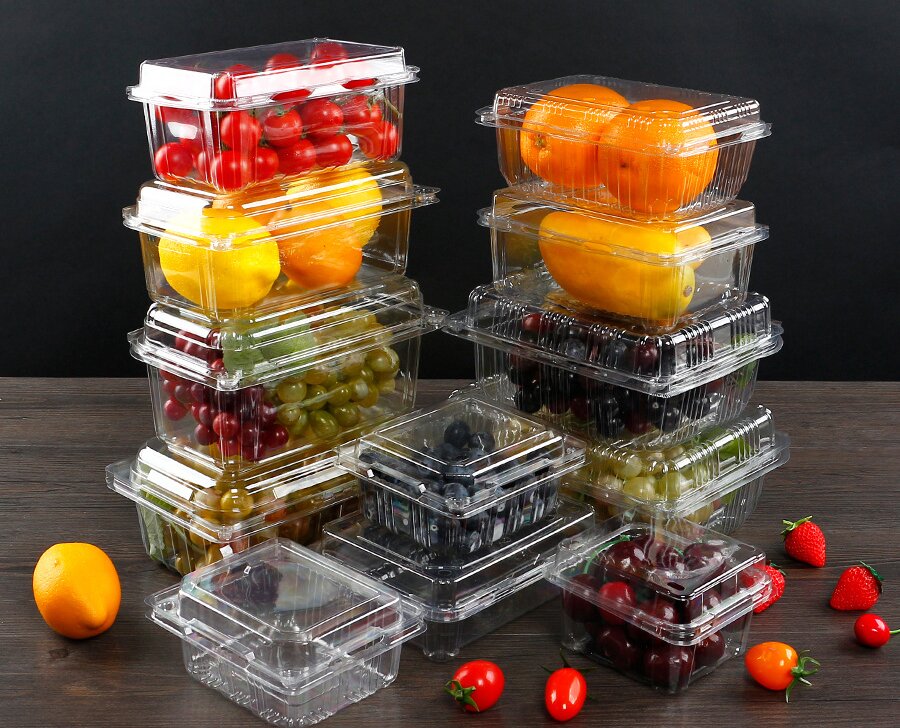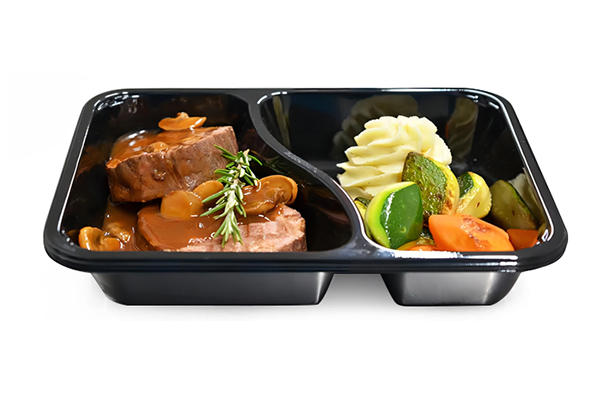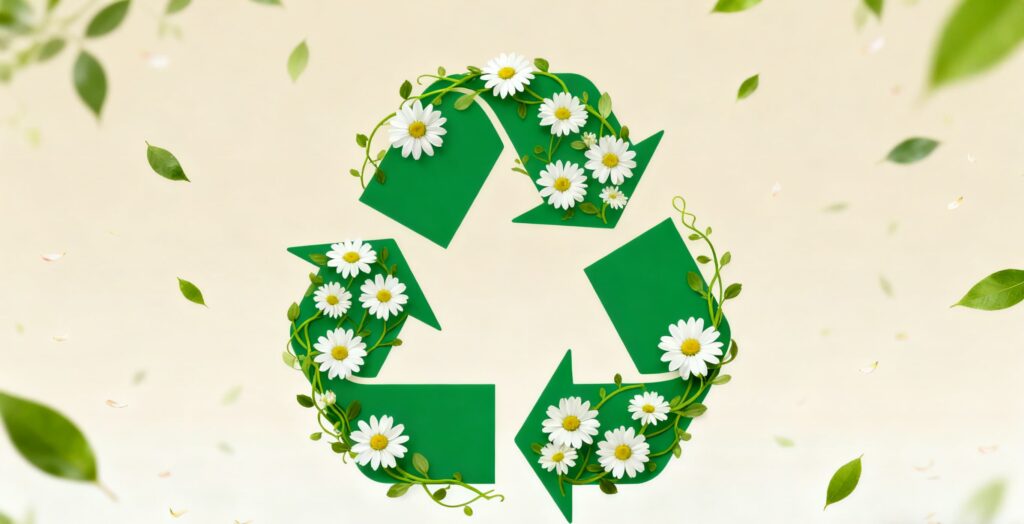Quick Summary:
This article explores sustainable food packaging options, focusing on PET, RPET, CPET, and PLA materials. It highlights the benefits and applications of each material, helping businesses choose the best option based on their needs—whether it’s for cold, hot, or eco-friendly food packaging. The article also discusses the advantages of clear PET fruit boxes and compares CPET and PET for heat-resistant applications, while emphasizing the environmental benefits of RPET. Additionally, it addresses common questions about these materials and their use in food packaging.
Introduction:
Imagine you’re a business owner in the foodservice industry, seeking to improve your sustainability efforts. One of your main concerns? Finding food packaging that is both environmentally friendly and high-quality. After all, with growing demand for eco-conscious solutions, how can you ensure that your packaging is not only safe but sustainable?
Enter PET, RPET, CPET, and PLA materials. These four materials have become the go-to solutions for food packaging manufacturers worldwide, but which one is the best choice for your needs? Today, we will explore the various advantages and applications of these materials, backed by scientific data, expert insights, and case studies, so you can make a more informed decision for your business.
Understanding the Basics: PET, RPET, CPET, and PLA – What’s the Difference?
When choosing food packaging, it’s crucial to understand the materials you’re working with. Let’s break down these four popular options:
-
PET (Polyethylene Terephthalate): PET is one of the most commonly used plastic materials due to its strong properties, clarity, and recyclability. It’s ideal for creating containers that need to maintain their shape and durability while offering excellent clarity for food visibility.
-
RPET (Recycled PET): RPET is recycled PET, making it an eco-friendly alternative. RPET packaging is both cost-effective and sustainable, as it helps reduce plastic waste by repurposing previously used PET materials.
-
CPET (Crystalline PET): CPET is known for its ability to withstand high temperatures, making it perfect for heat-resistant packaging, such as microwaveable trays and oven-safe containers. It’s the material of choice for applications where durability and heat resistance are necessary.
-
PLA (Polylactic Acid): PLA is a biodegradable plastic derived from renewable resources like corn starch or sugarcane. While it is an excellent eco-friendly option for cold food and beverages, PLA cannot handle high heat.
As the demand for sustainable solutions rises, each of these materials has carved out its niche in the food packaging industry.
Exploring the Benefits and Applications of Clear PET Fruit Boxes
Among the many materials used in food packaging, clear PET fruit boxes are among the most popular options in the foodservice sector. Thanks to their transparency, they allow consumers to easily see the fresh contents inside, which is particularly important for fruits and vegetables. Not only do these containers provide an attractive display, but their ability to protect and preserve the freshness of food makes them highly valued in supermarkets, fruit shops, and restaurants.
What makes clear PET fruit boxes even more appealing is their thermoforming process. This manufacturing method allows for customization and flexibility in design, enabling businesses to offer a variety of packaging solutions that meet both aesthetic and functional requirements. For more details on the thermoforming process and its advantages, you can refer to this article: Clear PET Fruit Box: Thermoforming Process, Advantages, and Market Applications.

CPET vs. PET: Which Material Is Right for Your Food Packaging Needs?
When it comes to choosing between CPET and PET, the key consideration lies in the packaging’s intended use. PET is an excellent choice for cold food packaging such as salads and fruits, offering great clarity and strength. However, if you’re packaging hot or microwaveable foods, CPET is your go-to material. CPET offers higher heat resistance, making it suitable for packaging prepared meals that need to be heated in the microwave or oven.
If you’re interested in understanding the differences between CPET and PET in more detail, be sure to check out this insightful comparison: CPET Material vs. PET Material: Thermoforming Applications.


The Green Revolution: Why RPET Is a Game Changer for Sustainable Food Packaging
In recent years, RPET has gained significant traction due to its environmentally friendly nature. This material is made from post-consumer plastic bottles, making it a sustainable choice for businesses aiming to reduce their carbon footprint. Not only does it help decrease plastic waste, but it also performs similarly to virgin PET in terms of durability, clarity, and strength.
For food packaging manufacturers, switching to RPET can be a cost-effective way to improve sustainability efforts without compromising on product quality. If you’re curious about the benefits of RPET and want to know how it compares with other materials like PLA and CPET, take a look at this comparison guide: Comparing RPET, PET, CPET, and PLA: Which is the Best Choice for Food Packaging?.

The Case for PLA: Eco-Friendly, But Not Without Limitations
As we move toward more sustainable solutions, PLA has emerged as an excellent biodegradable option for food packaging. Unlike traditional plastic, PLA is made from renewable resources like cornstarch, which means it breaks down naturally over time, reducing landfill waste.
However, PLA has limitations. It cannot handle hot food or beverages, making it more suited to cold applications such as salads, smoothies, and desserts. Its rigidity and lack of heat resistance might be a disadvantage for some applications, but it remains a leading choice for businesses looking to align with eco-conscious consumer demands.

FAQ Section: Answers to Common Questions About Food Packaging Materials
Q1: Is PET recyclable?
Yes, PET is 100% recyclable, and it is one of the most commonly recycled plastics worldwide. This makes PET an eco-friendly option for businesses looking to minimize waste.
Q2: Can PLA be used for hot food?
No, PLA is not suitable for hot food as it has a low melting point. It is best used for cold food and beverages.
Q3: How does CPET perform in the microwave?
CPET can withstand high temperatures, making it ideal for microwaveable food packaging. It can safely be used for heating prepared meals in the microwave.
Q4: Is RPET as durable as virgin PET?
Yes, RPET offers similar durability and strength as virgin PET, making it an excellent alternative for businesses seeking a sustainable option without sacrificing quality.
Q5: What is the best material for food packaging?
The best material depends on the specific needs of your business. PET and RPET are ideal for cold food, while CPET is best for hot food. PLA is a great option for eco-conscious businesses, but it is only suitable for cold applications.
Sustainable Packaging Is the Future
As sustainability becomes a central focus for businesses worldwide, selecting the right packaging material is essential for both the environment and the bottom line. By choosing materials like PET, RPET, CPET, and PLA, foodservice companies can make significant strides in reducing waste, enhancing food safety, and meeting the demands of eco-conscious consumers.
Incorporating these materials into your business operations not only benefits the environment but also improves brand image and customer loyalty. The future of food packaging is green, and it starts with making the right material choices today.
With these insights and product-specific knowledge, we hope you are better equipped to navigate the evolving world of food packaging. If you’re ready to explore sustainable options for your business, start with PET, RPET, CPET, and PLA materials – the key to a brighter, greener future in food packaging.

Conclusion Summary:
In conclusion, choosing the right food packaging material is essential for businesses aiming to balance sustainability, functionality, and consumer appeal. PET, RPET, CPET, and PLA each offer unique advantages for different applications, from clear PET fruit boxes to eco-friendly PLA solutions for cold foods. By understanding the strengths and limitations of each material, businesses can make informed decisions that support both environmental goals and operational needs. As sustainability becomes more important to consumers, switching to greener materials is not just a trend but a necessary step toward a more responsible and profitable future in food packaging.





